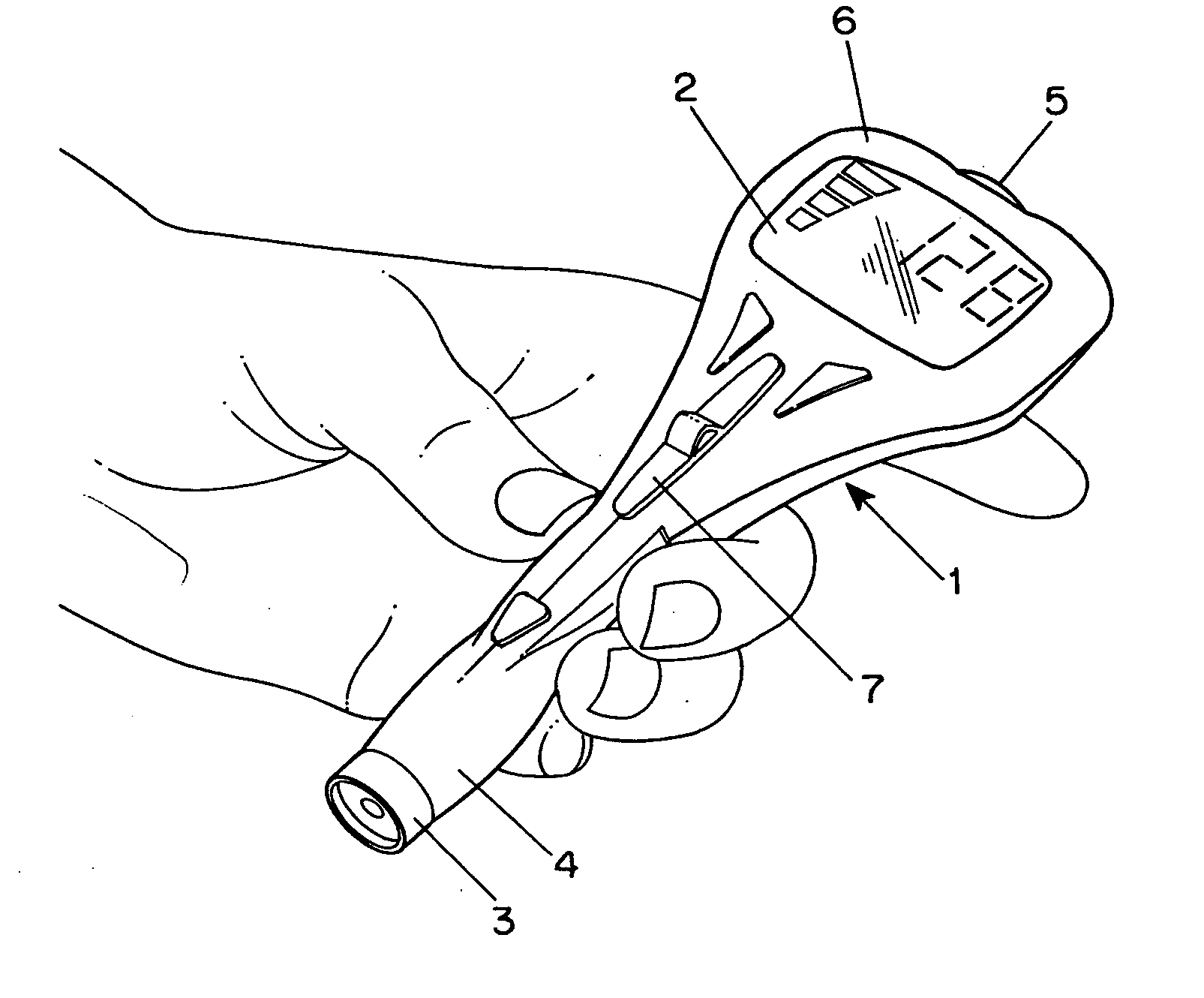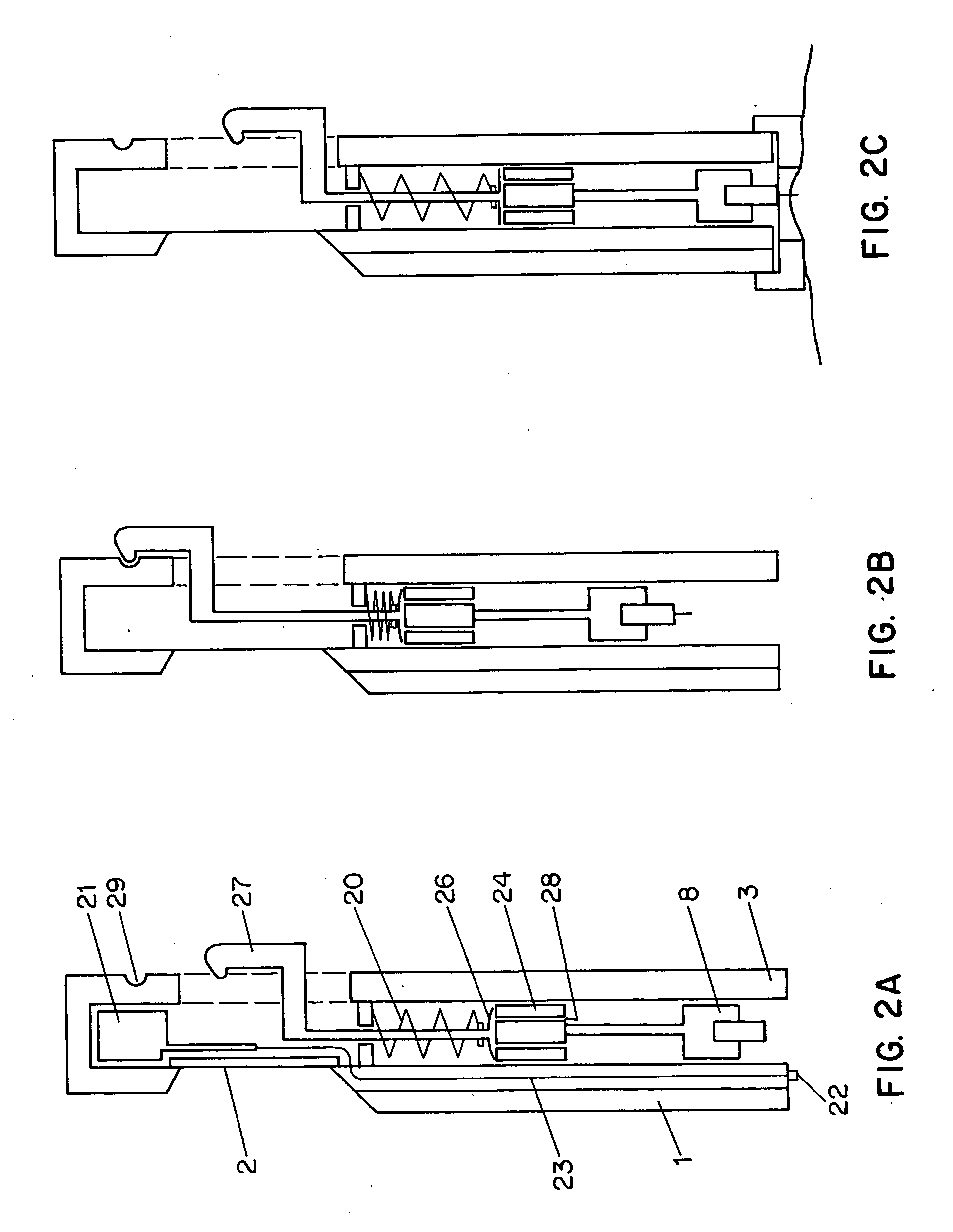Combined lancet and electrochemical analyte-testing apparatus
a technology of electrochemical and analyte, which is applied in the direction of diaphragms, blood sampling devices, immobilised enzymes, etc., can solve the pain inflicted by the currently available lancets or finger-sticking devices, increase the pain associated with the procedure, and reduce the effect of the pain of the procedur
- Summary
- Abstract
- Description
- Claims
- Application Information
AI Technical Summary
Benefits of technology
Problems solved by technology
Method used
Image
Examples
Embodiment Construction
[0024] The apparatus of the present invention is an integrated lancing and analysis device which does not require a separate action for the transfer of the sample from the puncture site to a strip for analysis. This apparatus includes a meter unit, in which the electronics for analysis of a sample and display of a result are located, a cutting member (i.e, a lancet or hollow needle) and an electrochemical sensor. The electrochemical sensor includes an “absorptive member” for the uptake of sample. As used in the specification and claims hereof, the term “absorptive member” encompasses various methods for achieving the direct transfer of a liquid sample from the sampling site to the electrochemical sensor, including but not limited to absorptive materials which take up liquid and cannula's through which liquid is transferred. The uptake of liquid may be a result of inherent capillarity resulting from the structure of the absorptive material or the size of the analysis chamber or cannu...
PUM
| Property | Measurement | Unit |
|---|---|---|
| time | aaaaa | aaaaa |
| time | aaaaa | aaaaa |
| optical analysis | aaaaa | aaaaa |
Abstract
Description
Claims
Application Information
 Login to View More
Login to View More - R&D
- Intellectual Property
- Life Sciences
- Materials
- Tech Scout
- Unparalleled Data Quality
- Higher Quality Content
- 60% Fewer Hallucinations
Browse by: Latest US Patents, China's latest patents, Technical Efficacy Thesaurus, Application Domain, Technology Topic, Popular Technical Reports.
© 2025 PatSnap. All rights reserved.Legal|Privacy policy|Modern Slavery Act Transparency Statement|Sitemap|About US| Contact US: help@patsnap.com



